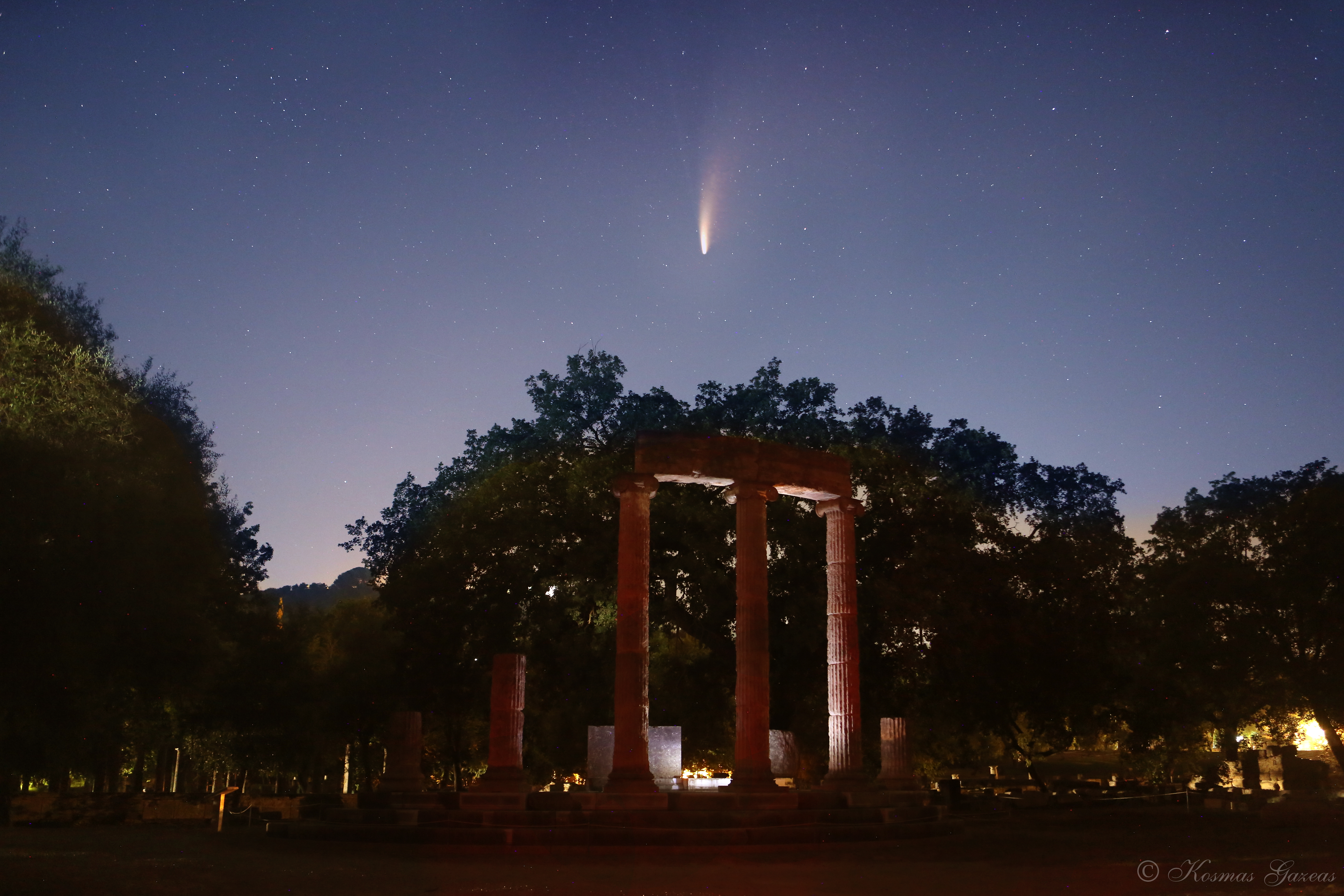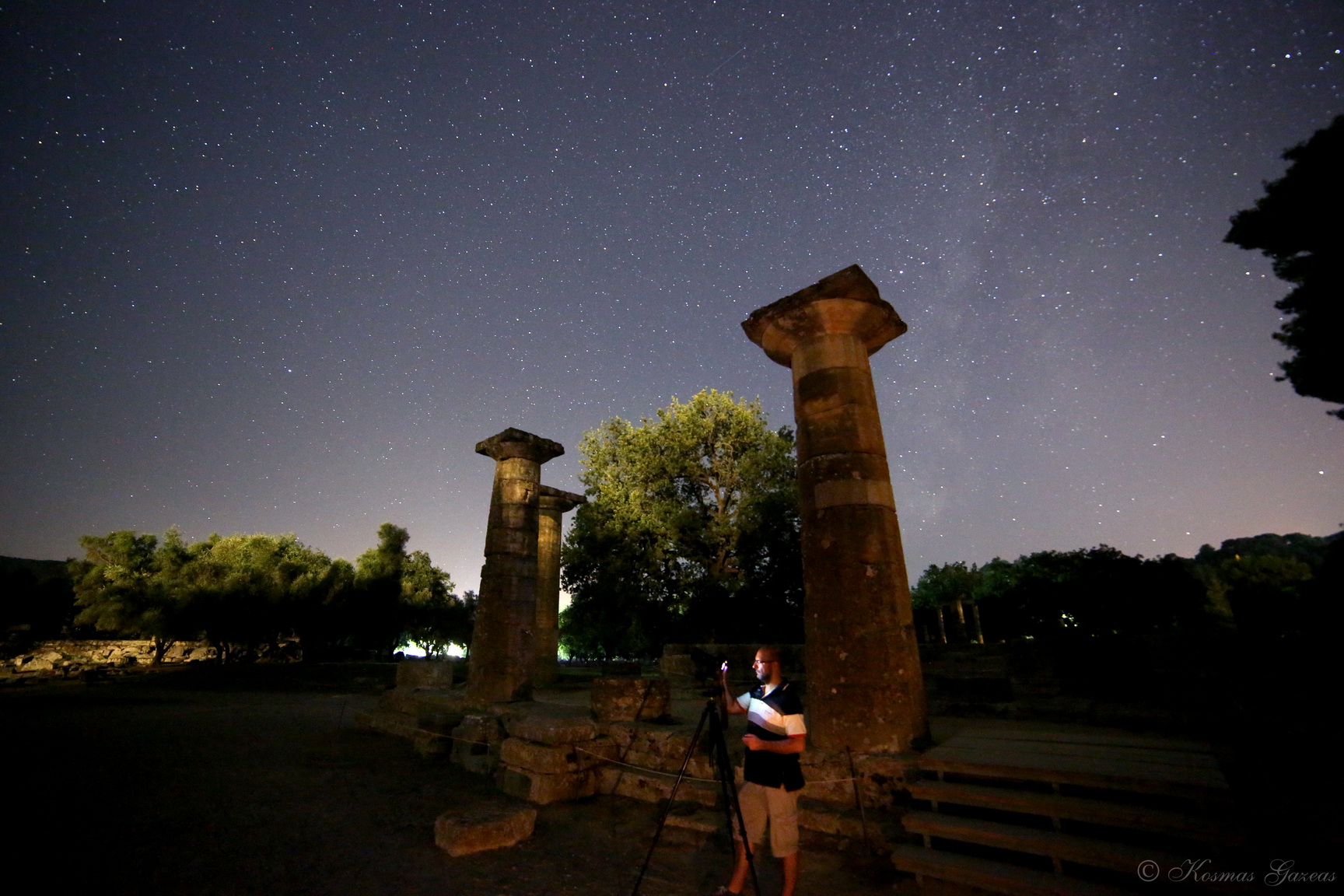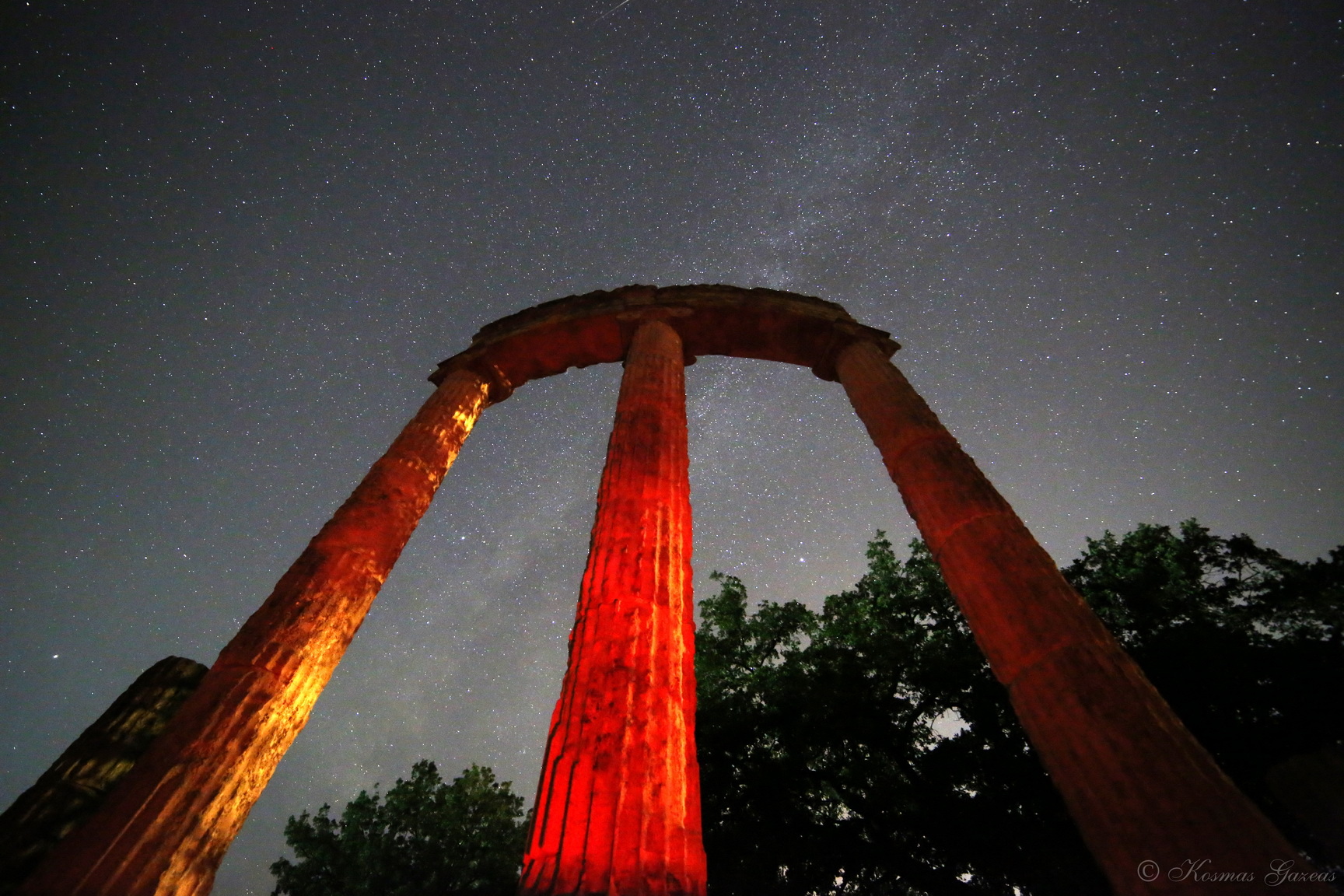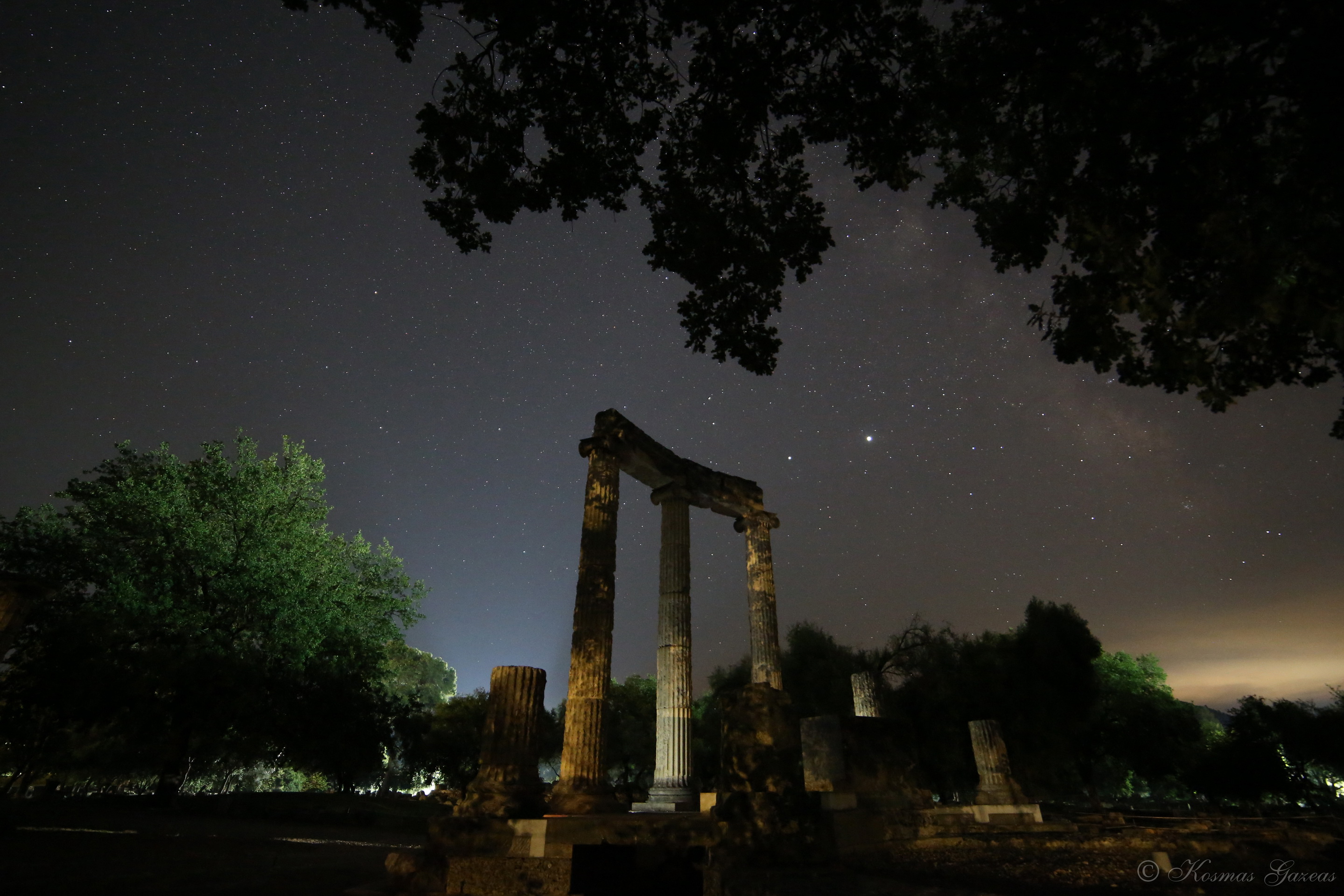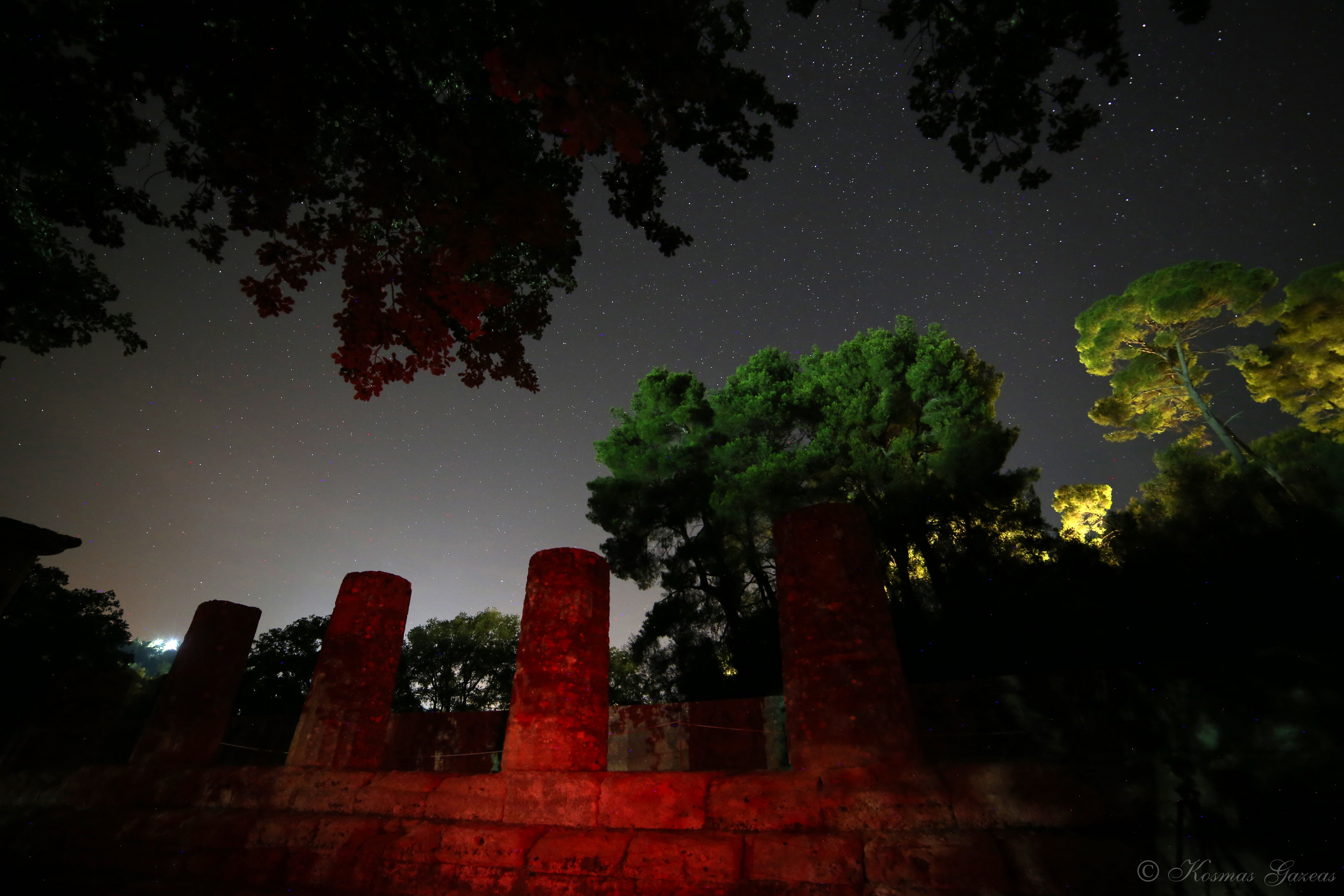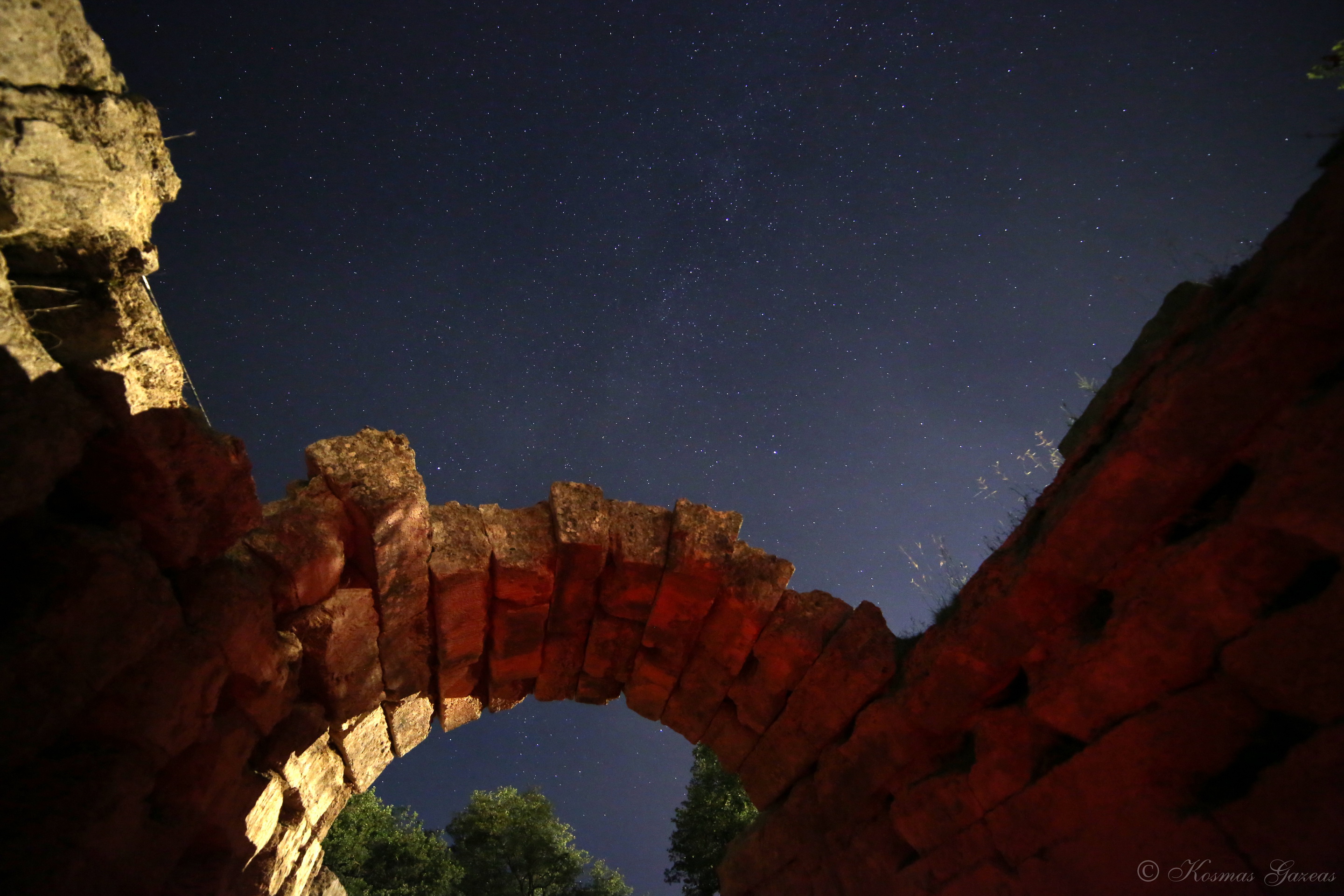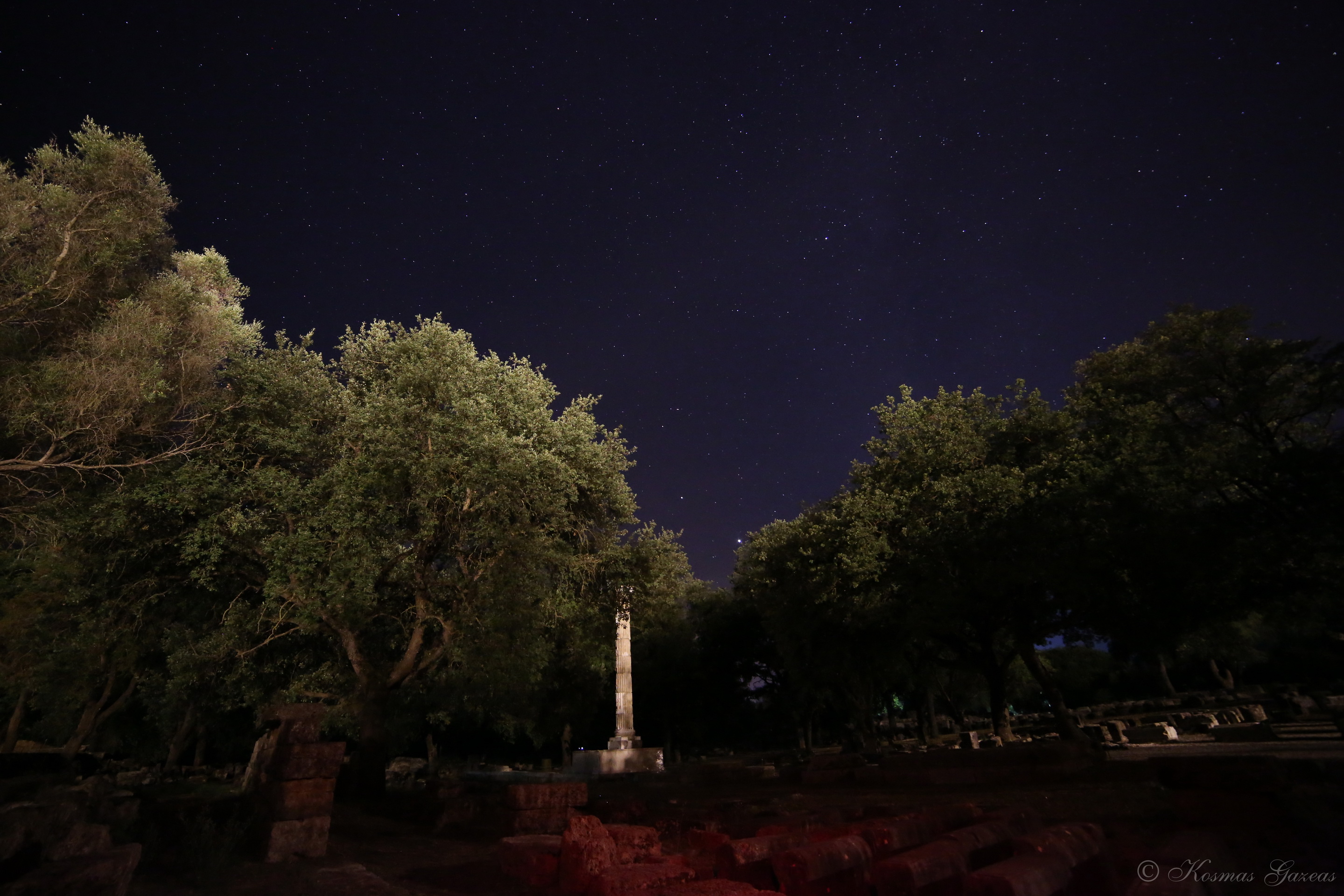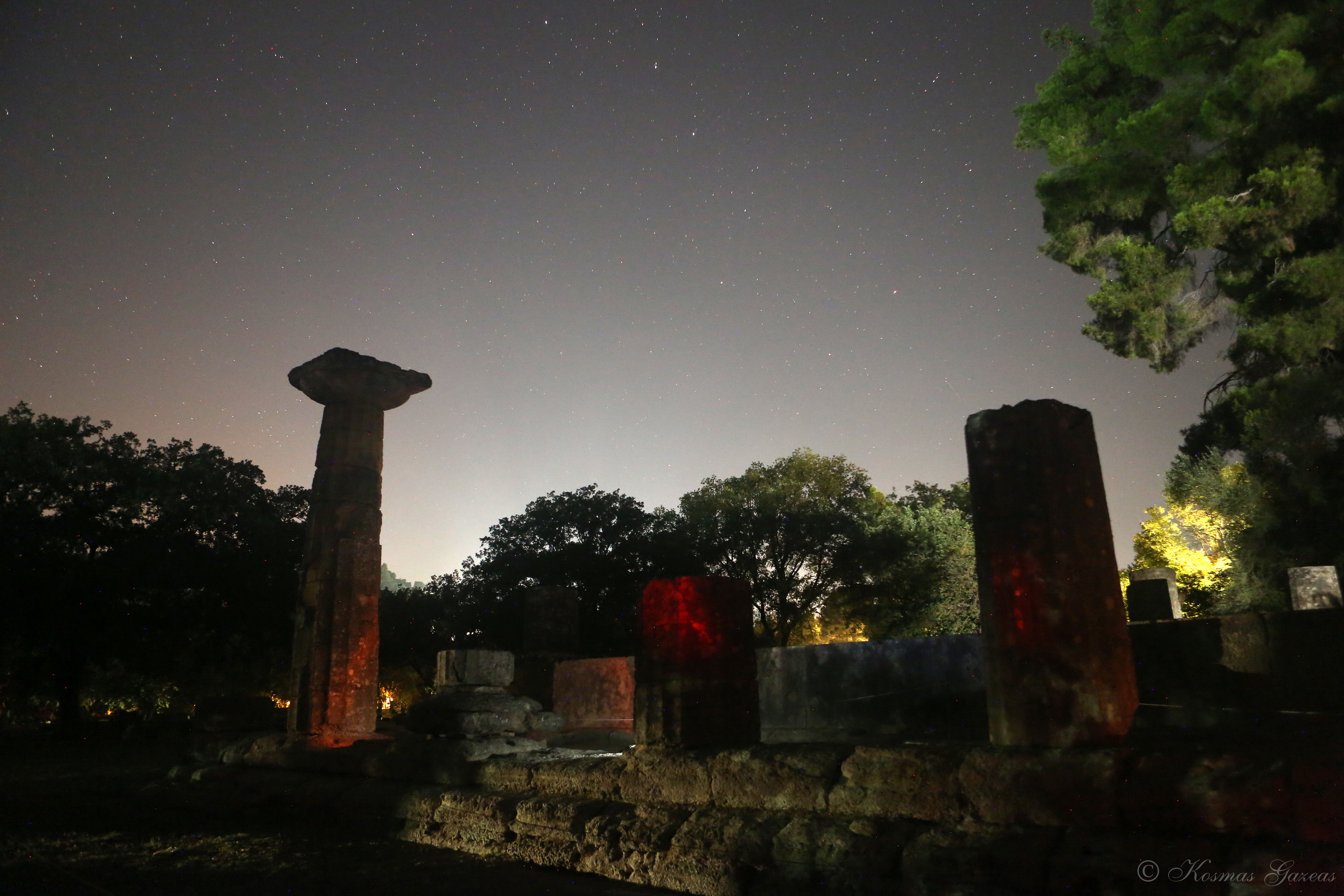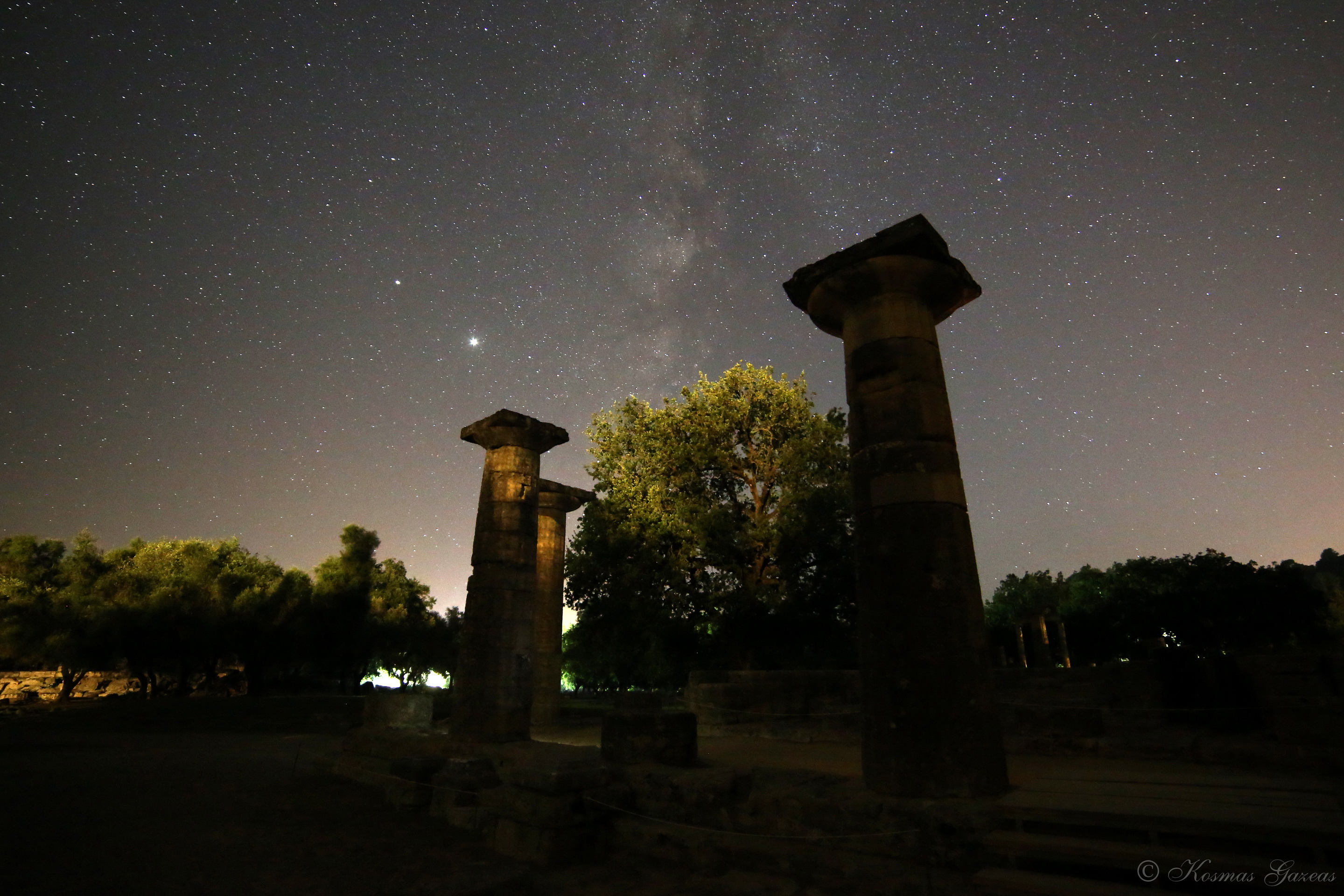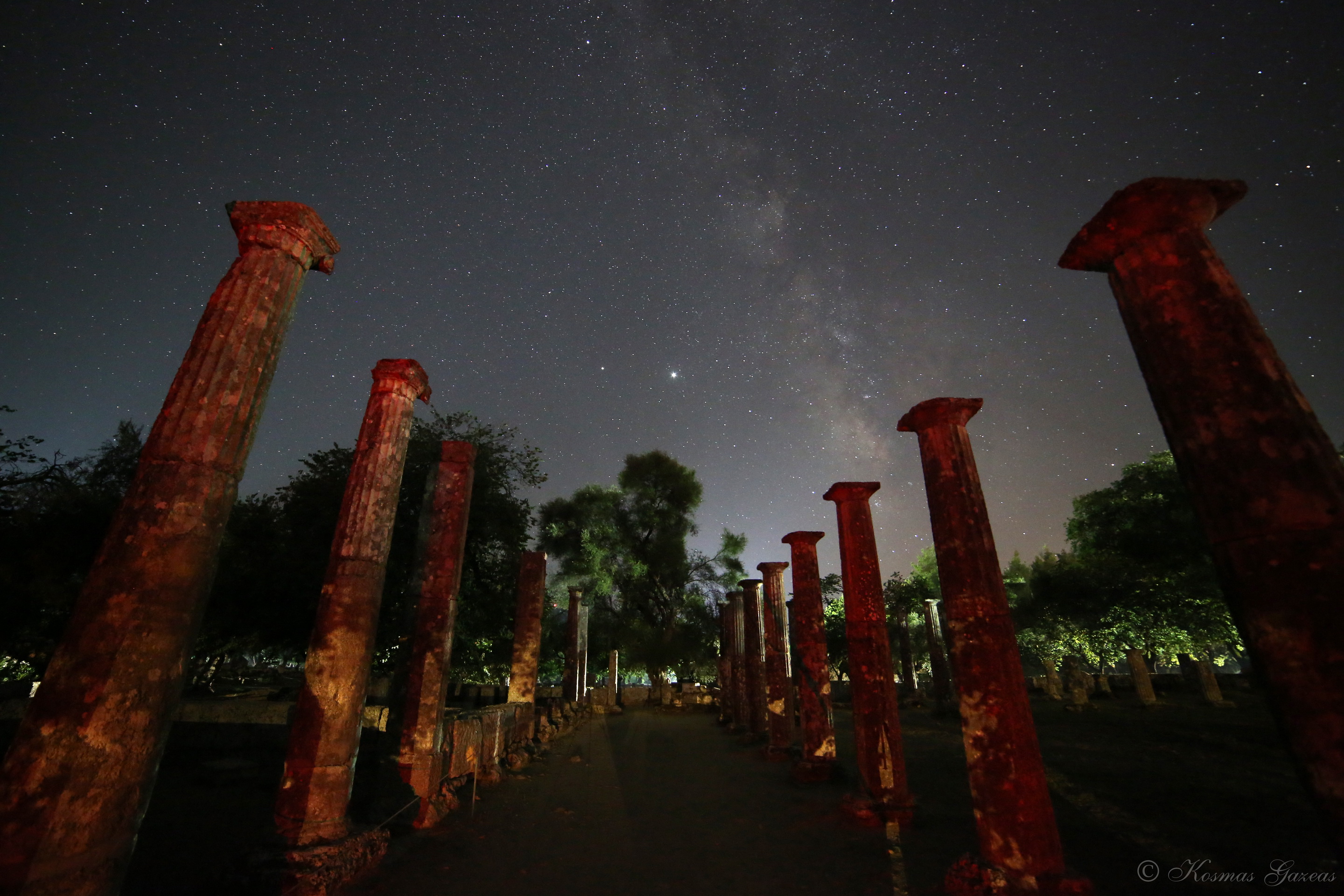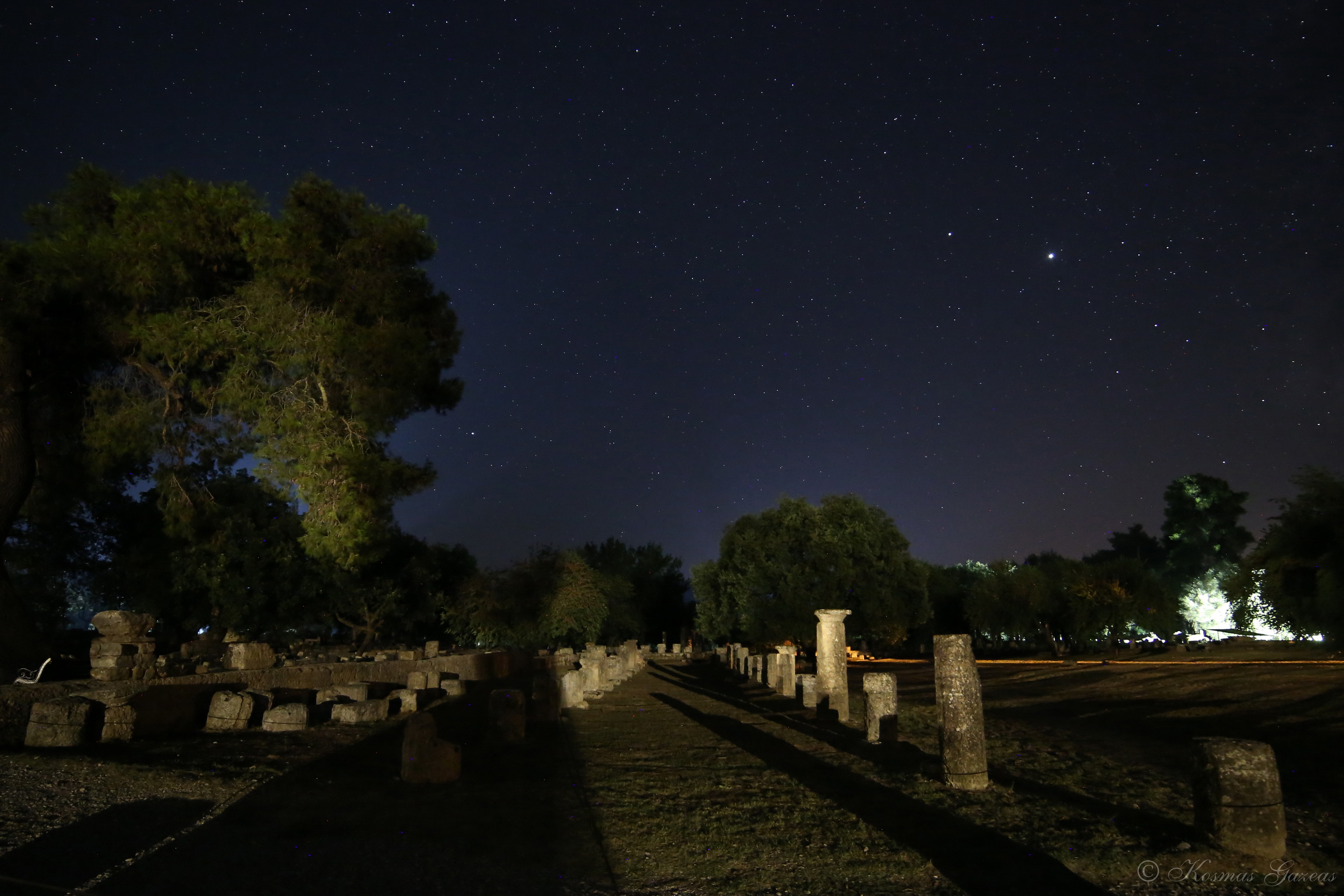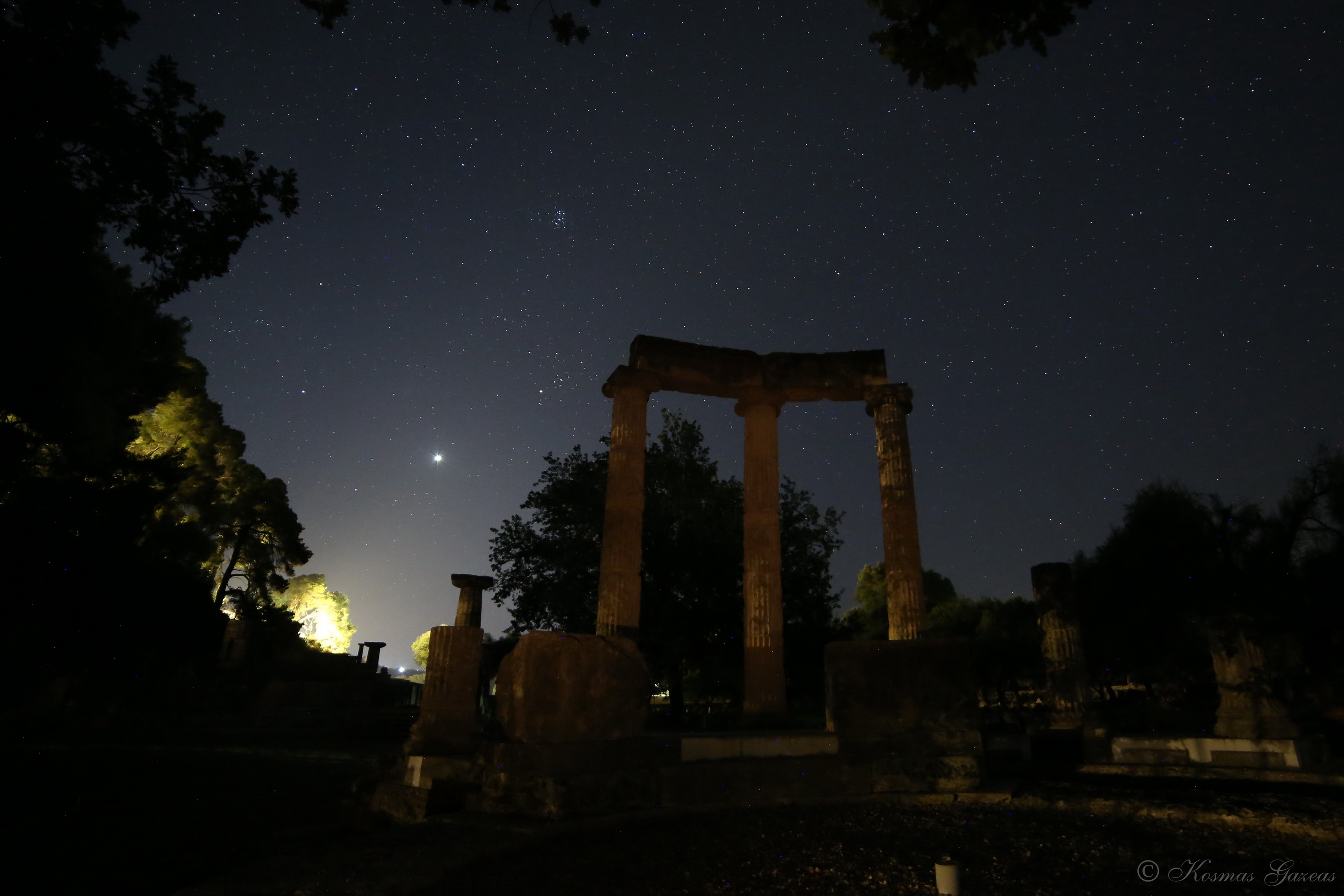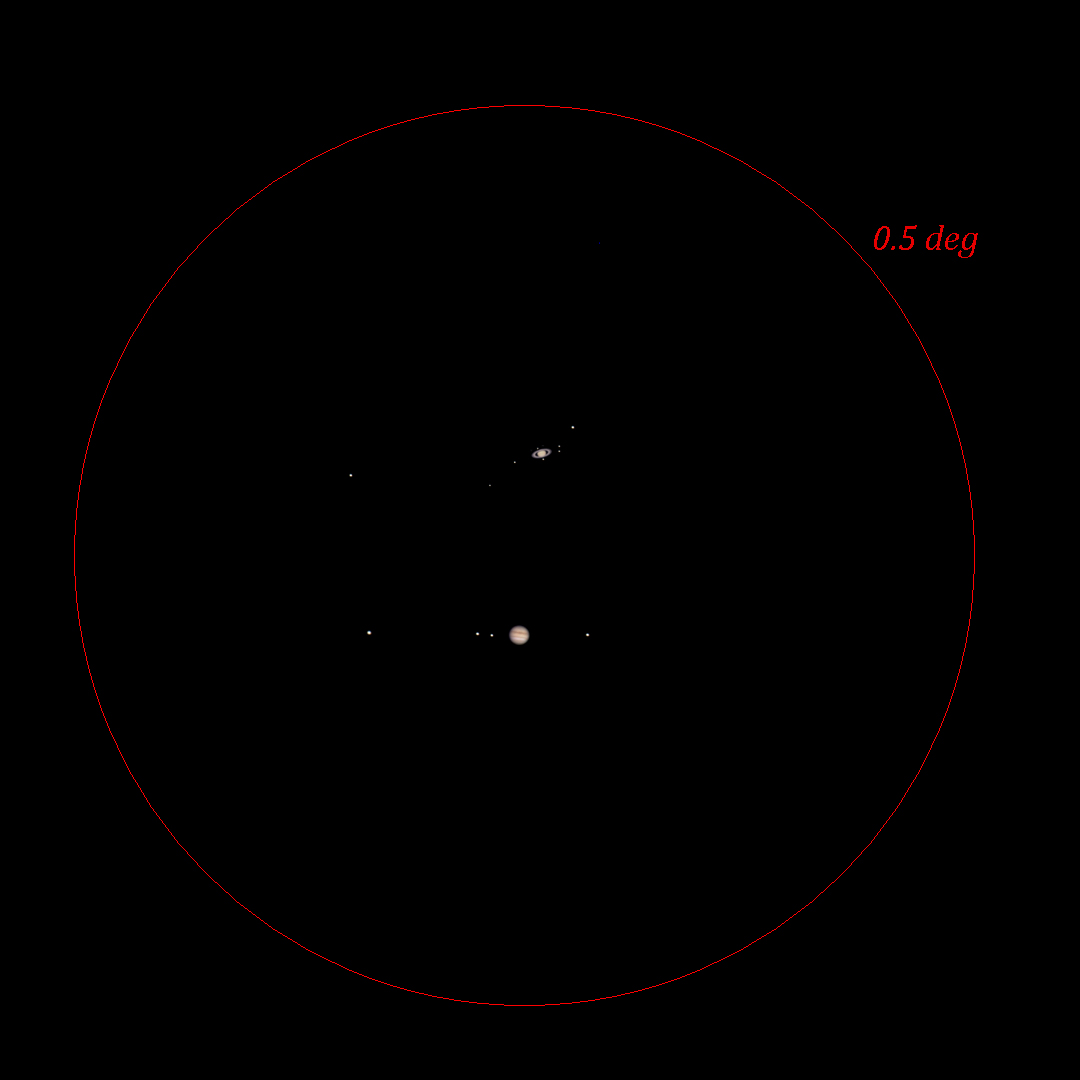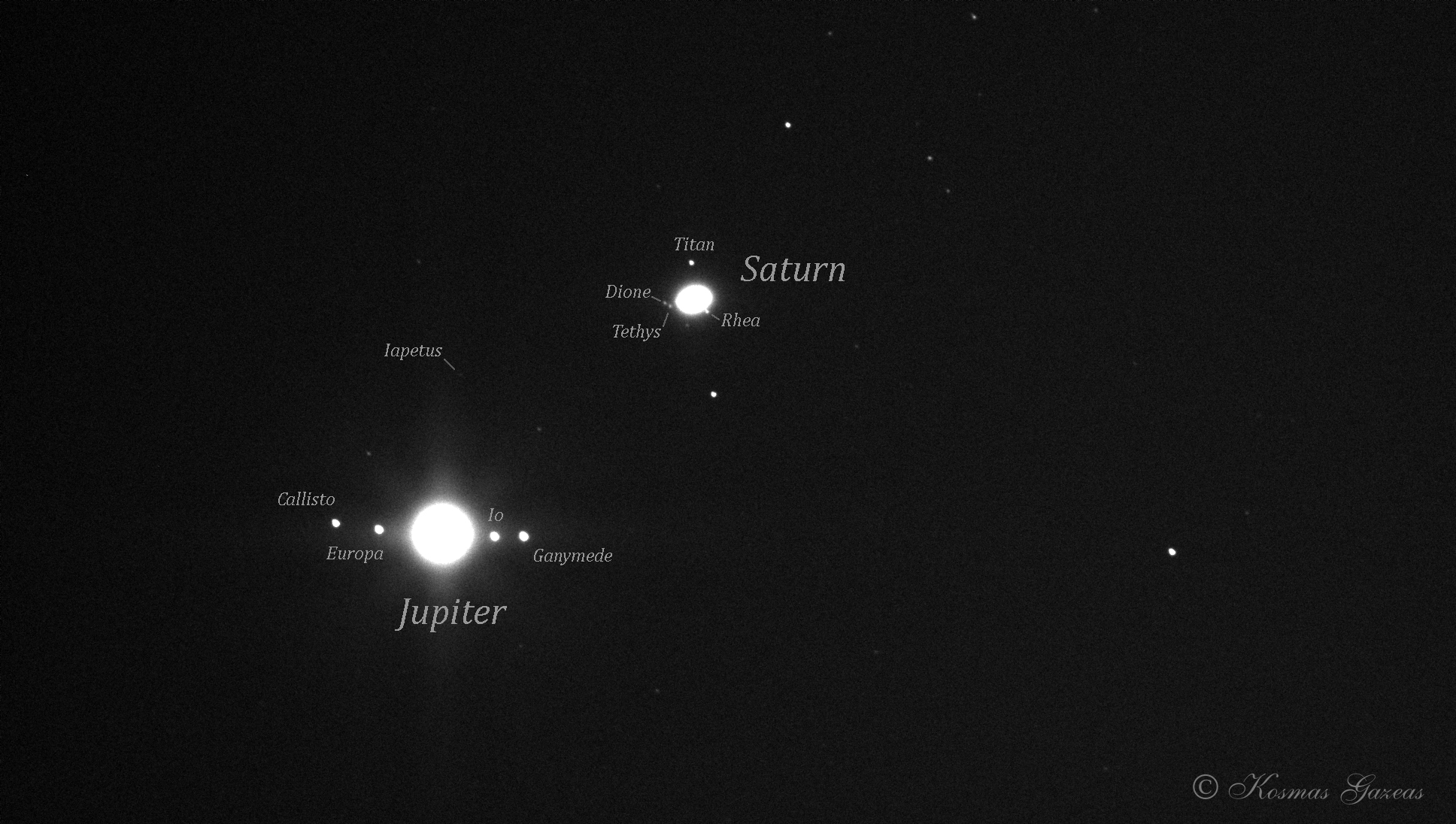Public Nights and Special Astronomical Events during 2020-2021
Night photography from the archeological site of Olympia
Following a special study permit, issued by the Ephorate of Antiquities of Ilia, on July 24 and 25, 2020, a night photo was taken with a confession Impressive results at the archeological site of Olympia by Dr. Kosmas Gazeas, Lecturer in Astrophysics at the Department of Physics of NKUA. The purpose of the photography was research and concerned the extremely rare arrival of a comet named C\2020 F3 NEOWISE in our Solar System. The comet's arrival was safe for Earth, and offered the unique opportunity to study a primordial celestial body created before from 4.5 billion years, along with the planets we know today.
Comet C\2020 F3 NEOWISE, as photographed from the archeological site of Olympia, on July 25, 2020.The night photography of the above dates coincided with the comet's proper position in the sky and gave the unique opportunity to photographed and studied within the stunning landscape of the sanctuary of Ancient Olympia, having in the foreground the temples, the individual monuments and buildings such as Temple of Hera, the Philippeion and the Stadium or Leonidas.
From the first evening hours the comet was visible in the sky, among the stars of the constellation Ursa Major. The photography of Philippeion and the Temple of Hera against the backdrop of the starry sky left an amazing (and at the same time rare) photographic imprint.
The previous arrival of the comet was about 4500 years ago (2500 BC) when the first samples of civilization of Early Helladic II period in the wider area of Olympia were found.
The comet is now traveling at a speed of about 230,000 km/h and moving away from our Solar System, while its orbit is so large that it will visited again after 6800 years.
The starry sky from the archeological site of Olympia, on July 25, 2020.The combination of rare astronomical phenomena with the impressive view of the temples of the area offers an aesthetically beautiful result, which will help in the dissemination of photographs to the wider international scientific community and the public around the world, in order to learn more about the rich history of our country.
In his work, Dr. Gazeas had the full assistance of the archaeologist of Ef. A. Ilias Mr. Konstantinos Antonopoulos, the Chief Constable Mr. Marini Nikolakopoulos and all the prison staff, while the interest of the Head of the Hellenic Police was great. Ilia Mrs. Erofilis-Iridas Kollia who did not hide her enthusiasm for its excellent result. In fact, he invited Dr. Gazea in due time to present to the general public at a special event in Olympia the full results and the material of his research.
The photos on the current webpage are a sample of the rich material that Dr. Gazeas managed to collect with great care from his overnight stay inside the archeological site of Olympia for two consecutive nights.
The starry sky from Philippeion, at the archeological site of Olympia. The planets Jupiter and Saturn can be seen in the sky, to the left of the bright zone of our Galaxy.The rising of the star cluster of the Pleiades from the ancient stadium of Olympia.
The entrance of the ancient stadium of Olympia with the background of our Galaxy.
The starry sky from the temple of Hera, at the archeological site of Olympia.
The starry sky from Palaistra, at the archeological site of Olympia. The planets Jupiter and Saturn can be seen in the sky, to the left of the bright zone of our Galaxy.
The starry sky from Gymnasium, at the archeological site of Olympia. The planets Jupiter and Saturn can be seen in the sky, to the left of the bright zone of our Galaxy.
The rising of the planet Aphrodite, together with the constellation of Taurus from the archeological site of Olympia. Among the constellations are the star clusters of Yadas and Pleiades.
The publication, use or further dissemination of photographs taken from the archaeological site of Olympia is permitted solely for non-commercial purposes
and any use must be accompanied by the following information, otherwise it is illegal:
"The rights to the depicted monuments belong to the Ministry of Culture and Sports (l.3028/2002)"
"The Archaeological Site of Olympia falls under the responsibility of the Ephorate of Antiquities of Ilia"
"Hellenic Ministry of Culture and Sports/Archaeological Resources Fund »
Creator / Photographer: Dr. Kosmas Gazeas, Astrophysicist, Department of Physics, NKUA, Section of Astrophysics, Astronomy & Mechanics, Department of Physics
A rare planetary conjunction between Jupiter and Saturn
The conjunction of Jupiter and Saturn occurs every 20 years, but is not always visible, as it often occurs back or very close to the Sun. The previous visible conjunction of the two giant planets was in March 1226 AD, while there was one more (but very close to the Sun) on July 1623 AD, just 14 years after Galileo used the astronomical telescope. The next conjunction, that will be easily visible, will occur in March 2080. At this year's Jupiter appeared just 6 arcminutes (0.1 degrees) next to Saturn, corresponding to 1/5 of the diameter of the Moon.
The phenomenon was visible in the southwest sky on 19, 20, 21 or 22 December, between 17:00-17:30 in the afternoon, i.e. shortly after sunset. The two planets were located at an altitude of about 20-22 degrees above the southwestern horizon, at an azimuth of 220 degrees. The planets were easily visible, as Saturn had an effect magnitude of +0.6 mag and Jupiter -2.0 mag.
Members of the science communication team "Planets In Your Hand" observed and recorded the phenomenon from the University of Athens Observatory and broadcast live the image from the telescope in order to observe the phenomenon in real time!
The photo shows the field of view of an amateur telescope (half a degree - as much as the diameter of the Moon), as it simultaneously observes Jupiter, Saturn and their satellites on December 21, 2020. Around Saturn one can see the satellites: Titan, Rhea, Dione, Tethys, Enceladus, Mimas, Hyperion, Iapetus, while around Zeus the following satellites can be seen: Io, Europa, Ganymede, Callisto.
The photo shows Jupiter and Saturn in the same field of view, as photographed by the University of Athens Observatory on December 20, 2020. The photo was taken with a long exposure time, so that the satellites of the planets can be seen. The result of the large exposure is the over-exposure of Jupiter and Saturn planetary disks.
The view of the sunset on December 20, 2020 from the University Observatory of Athens. Jupiter and Saturn are visible to the naked eye like two bright dots in the sky.
Schematic representation of the Solar System and the relative position of the planets Jupiter, Saturn and Earth on the day of the conjunction.
Public Nights during the academic year 2020-2021
Unfortunately, there are no Public Nights during the academic year 2020-2021.
Special Events during the academic year 2020-2021
Special public events organized during the academic year 2020-2021:
